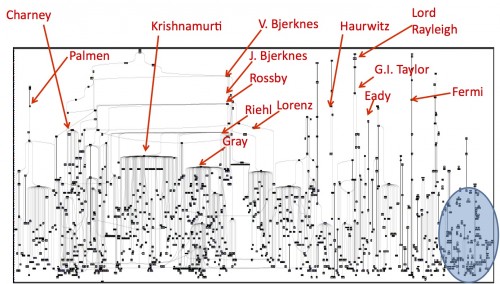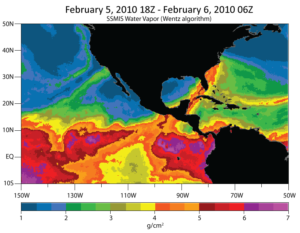by Tanja Fransen, NOAA
Ninety-three. That is how many annual meetings the American Meteorological Society has hosted. Planning for an annual conference can take years, from selecting the location, securing the event center and hotels, to selecting the organizing committee. The organizing committee then decides upon a theme at least 15-18 months in advance. Individual conference organizers have their “calls for papers” ready nearly 14 months in advance. Presenters have to have their abstracts submitted nearly 5 months before the annual meeting.
So…what happens when you have an event that is the magnitude of Hurricane/Post-Tropical Storm Sandy after all the deadlines have passed? You adapt and overcome.
That is what happened this year. Even the Major Weather Impacts Conference, which has a later abstract deadline than most conferences, was finalized a week before Sandy become one of the most significant events in decades. Many individuals quickly realized the importance of including Sandy at the 2013 Annual Meeting, and a committee was organized. Emails started flying back and forth, discussions were occurring on message boards and social media, and ideas were flowing, to the tune of hundreds of emails, phone calls, and social media messages.
Trying not to conflict with other conferences where committees had spent over a year planning them, AMS recommended a Town Hall Session to introduce Sandy formally into the 2013 AMS meeting. And so it will be, 7:30 to 9:30 p.m. on Monday, January 7, in Ballroom E at the Austin Convention Center. Committee organizers received feedback from many sources, and in the end, decided that invited speakers would discuss the major impacts of Sandy, the scientific issues, the warnings process, and more. The list of speakers (below) is diverse, representing, for example, NOAA, NCAR, the Capital Weather Gang, the Wall Street Journal.
Over the next few months, as further discussion, research and assessments are conducted on the meteorology, climatology, communication, preparedness, response and recovery of the event, other opportunities will keep Sandy in the spotlight. That includes conferences from within the AMS, such as the 19th Conference on Atmospheric and Oceanic Fluid Dynamics from June 17-21, 2013, in Newport, Rhode Island, and the 41st Broadcast Meteorology Conference /2nd Conference on Weather Warnings and Communication being held from June 16-28, 2013, in Nashville, Tennessee, as well as the 2014 Annual AMS Meeting in Atlanta, Georgia, in February 2014. The theme for the 2014 Annual Meeting nicely encompasses Sandy in “Extreme Weather – Climate and the Built Environment: New perspectives, opportunities and tools.” Other groups, organizations and agencies will also keep those discussions in the forefront.
We know there will be many questions that people will have for the presenters in the Town Hall Meeting in Austin. With a short time frame to discuss them, attendees are asked to use Twitter to send the questions they have; the hashtag is #AMSSandy. (Also, in general follow #AMS2013 for tweeting related to the Annual Meeting.) Organizers will group the questions into categories, and ask the top 3-5 questions, depending on time, to the presenters.
Here’s the scheduled agenda at this time:
7:30 PM. Introduction to Sandy and the Major Impacts — Louis W. Uccellini, NOAA/NWS/NCEP, Camp Springs, MD
7:45 PM. Hurricane Sandy: Hurricane Wind and Storms Surge Impacts — Richard D. Knabb, The Weather Channel Companies, Atlanta, GA
8:00 PM. Post-Tropical Cyclone Sandy: Rain, Snow and Inland Wind Impacts — David Novak, NOAA/NWS/Hydrometeorological Prediction Center, College Park, MD
8:15 PM. A Research-Community Perspective of the Life Cycle of Hurricane Sandy — Melvyn A. Shapiro, NCAR, Boulder, CO
8:30 PM. Communicating the Threat to the Public through Broadcast Media — Bryan Norcross, The Weather Channel, Atlanta , GA
8:45 PM. Following the Storm through Social Media — Jason Samenow, Washington Post, Washington, DC; and A. Freedman
9:00 PM. Storm Response in New York and New Jersey — Eric Holthaus, The Wall Street Journal, New York, NY
9:15 PM: Q&A: Moderators will present 3-5 questions submitted through Twitter to the panelists.

